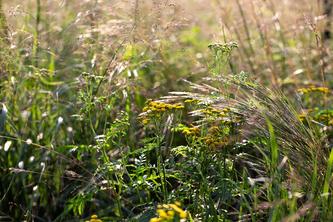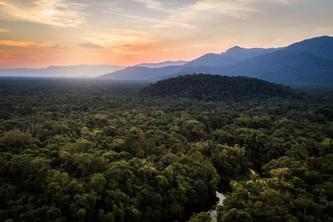
Heidi Roop often finds herself serving as a diplomat for climate science. Whether she's talking to the public as a University of Minnesota Extension educator or keynoting the Minnesota Ag-Urban Partnership forum, she brings the perspective of someone who has done the groundwork.
She also has testified before a Minnesota House committee to secure funding for a new Extension program to help communities understand and prepare for extreme weather.
“I have a front-row seat to generating the science about climate change, and it can be really scary,” says Roop, who has studied the climate stories contained in lake sediment and ice cores from around the world. “But the future doesn’t have to be scary if we find common ground and come together as a community and collective.”
An assistant professor of climate science in the College of Food, Agricultural and Natural Resource Sciences, Roop also directs the donor-supported U of M Climate Adaptation Partnership, which conducts research into climate change and works with communities across the state to apply that knowledge to manage their climate risks.
In her new book, The Climate Action Handbook: A Visual Guide to 100 Climate Solutions for Everyone, she offers ideas for how we can prevent climate change from getting worse and prepare for the future. Here, Roop talks about her work and offers suggestions.
What do we get wrong about climate change?
In the climate science community, we say things like “It’s all hands on deck” or “This is the crisis of our time.” Underneath that alarm is a stark reality. We also know that that messaging doesn’t work. We need to communicate the urgency of the challenge while also welcoming more people into the conversation.
Climate action isn’t only about counting emissions avoided or reduced. Actions like driving an electric car certainly have a big impact, but there are many things we all can do—whether it’s reducing emissions from our activities or engaging in climate action planning in our communities.
Is that what prompted you to write the book?
At the end of every workshop or talk I do, the hands go up and people say, “I understand how dire it is and that there are all these impacts, but what can I do?” That’s often followed by, “But does it matter? Do individual actions matter?”
The book is an attempt to broaden the conversation, to help people see themselves as a catalyst for changes big and small, no matter their financial resources, where they live, where they work, or what they value.
What are you doing now that you weren’t before you wrote the book?
I’m certainly more attuned to the many ways my everyday decisions can also be climate actions. I’ve also learned there are many motivations for my decisions that can also bring climate benefits. For example, I’ve realized that many climate actions are better for my family finances like not idling our cars, washing in cold water, or switching to an induction range. I’ve also been motivated to engage more in the climate work happening in my community.
___________________________
Some ways you can take action
Keep your electronic devices longer, and recycle them properly. In 2019, more than 53 million tons of waste came from electronic devices; they contained more than $57 billion of materials such as gold, platinum, and copper.
Plant trees. Shade from trees helps cool houses and buildings and reduces the heat island effect in urban areas. In Minnesota, for every dollar invested in such natural climate solutions, the state receives more than $8 in benefits.
Break the silence. Climate change can be a touchy subject. Talking to friends and family about what they care about and their hopes for the future can help them understand the impact of climate change and may encourage them to adjust their behaviors.
Embrace fruits, vegetables, and legumes. Cutting back on meat and dairy consumption by 25 percent can reduce emissions. Even one meat-free meal a week can make a difference.
Avoid wasting food, and compost food waste. About 40 percent of food produced in the United States is wasted.
Ditch the bottled water. It’s estimated to take about 1,000 to 2,000 times more energy to produce bottled water than tap water.
Drive more efficiently. Fuel economy tends to decrease at speeds over 50 miles per hour. Using air conditioning can reduce fuel economy by up to 25 percent. And combining errands into one trip can reduce fuel costs by half.
Learn more about how the U is creating a sustainable campus.





